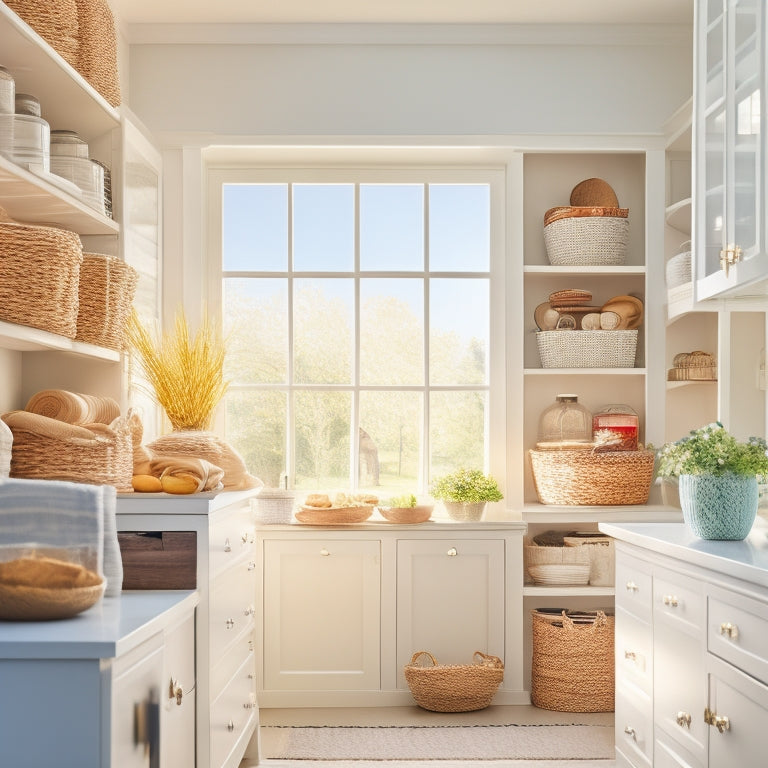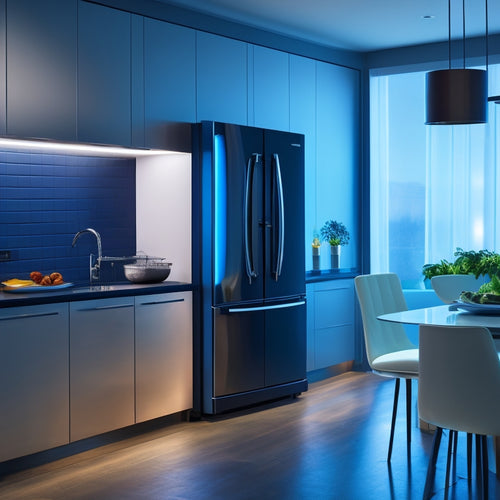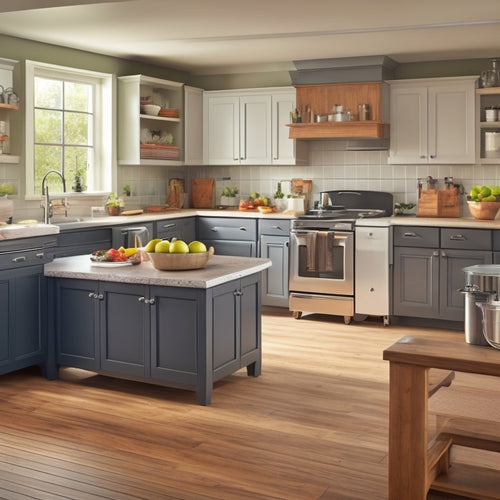
Revamp Your Pantry: Space, Shopping, and Function
Share
To revamp your pantry, start by optimizing space utilization through precise measurements and a tailored organization system. Consider your shopping habits and container needs, tailoring sizes to bulk purchases and grouping similar items together. Personalize your pantry's function and flow by designating zones for frequently used items and incorporating adjustable shelving. By aligning your pantry's layout with your shopping habits and user needs, you'll simplify meal preparation and reduce clutter. As you implement these strategies, you'll uncover opportunities to further refine your pantry's organization and efficiency, leading to a more streamlined kitchen experience.
Key Takeaways
• Maximize pantry space by taking precise measurements and using tailored containers to fit unique spaces and shopping habits.
• Tailor container sizes to bulk purchasing habits, using larger containers for grains and nuts, and smaller ones for spices and condiments.
• Group similar items together and designate zones for frequently used items to simplify meal prep and reduce clutter.
• Incorporate adjustable shelving and storage to accommodate different user needs and future adjustments.
• Leave space for flexibility as pantry needs evolve over time, ensuring an organized and functional space.
Optimizing Pantry Space Utilization
To maximize the efficiency of your pantry, it is essential to carefully consider the size of the space before purchasing containers, taking precise measurements to guarantee every inch is utilized effectively. This thoughtful approach enables you to create a tailored organization system, avoiding clutter and waste.
By measuring the space accurately, you can identify areas that require creative solutions, such as narrow shelves or corners. Maximizing efficiency in these areas can be achieved through the use of adjustable shelves, baskets, or carousels.
Shopping Habits and Container Needs
Your shopping habits play a significant role in determining the size and type of containers needed to optimize your pantry organization. Bulk purchases from stores like Costco or frequent visits to bulk food markets necessitate larger containers. Consider the types of items you typically purchase in bulk and tailor your container sizes accordingly.
For instance, if you buy large quantities of grains or nuts, invest in larger containers that can accommodate these items. Conversely, smaller containers are ideal for spices, oils, or condiments. By aligning your container sizes with your bulk shopping habits, you can guarantee a more efficient and organized pantry.
This harmonious balance will streamline your storage and retrieval process, saving you time and effort in the long run.
Personalizing Pantry Function and Flow
Optimizing pantry function and flow requires thoughtful consideration of how the space will be used, as this determines the most effective way to group and arrange items for easy access and efficient storage. A well-designed pantry should cater to the needs of its users, incorporating custom organization and user accessibility.
To achieve this, consider the following:
-
Group similar items together, such as baking supplies or snacks, to simplify meal preparation and reduce clutter.
-
Designate zones for frequently used items, like a coffee station or breakfast nook, to streamline daily routines.
-
Incorporate adjustable shelving and storage to accommodate different user heights and needs.
- Leave space for future adjustments, as your pantry needs may evolve over time.
Frequently Asked Questions
How Do I Maintain My Pantry Organization Over Time?
To maintain pantry organization, incorporate a daily routine of tidying up and restocking, and schedule seasonal purges to remove expired or unused items, ensuring a consistently optimized and functional pantry space.
Can I Use Decorative Containers for Functional Storage?
The eternal conundrum: to prioritize form over function, or vice versa. When it comes to decorative containers, let's be real – aesthetic priorities often clash with practicality. Opt for a harmonious balance by selecting containers that marry style with functionality, ensuring your pantry remains both beautiful and usable.
Are There Specific Pantry Organization Methods for Dietary Restrictions?
When organizing a pantry for dietary restrictions, consider designating specific zones, such as gluten-free areas or vegan sections, to guarantee easy identification and access to compatible ingredients, promoting safe and efficient meal preparation.
How Do I Label Containers for Easy Identification?
When labeling containers for easy identification, implement a consistent labeling system and consider color coding to categorize items, ensuring a visually organized pantry that streamlines access and saves time.
Can I Repurpose Old Furniture for Pantry Storage Solutions?
When repurposing old furniture for pantry storage, consider upcycled shelves or vintage cabinets to add unique character and functionality. Measure carefully to guarantee a seamless fit, and refinish or paint to match your pantry's aesthetic, creating a one-of-a-kind storage solution.
Conclusion
To sum up, a thoughtfully designed pantry can be a culinary haven, where meal preparation unfolds with the precision of a well-oiled machine. By carefully considering space, shopping habits, and function, individuals can craft a pantry that is a paragon of efficiency, where every item is effortlessly accessible and every moment is optimized.
With a revamped pantry, the possibilities are endless, and the art of cooking becomes a symphony of simplicity, where the rhythm of meal prep harmonizes with the hum of productivity.
Related Posts
-

7 Essential Tips for a High-Tech Kitchen
You're about to revolutionize your cooking experience with a high-tech kitchen that combines smart appliances, automa...
-

DIY Island With Built-In Trash and Recycling Station
You're about to create a kitchen island that's both functional and stylish, with a built-in trash and recycling stati...
-

What Makes a Perfect Laundry Room Layout?
You're designing a laundry room that's a haven of efficiency and style, where every element works in harmony to make ...


